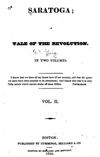HODGSON, ROBERT, carpenter, merchant, politician, army officer, office holder, and lawyer; b. c. 1765 in England; m. 8 June 1797 Rebecca Robinson in Charlottetown, St John’s (Prince Edward) Island, and they had at least one son; d. there 5 Jan. 1811.
Robert Hodgson went to Port Roseway (Shelburne), N.S., in 1782 from Sandwich, England. Some time later he migrated to St John’s Island where, although not a loyalist, he received from Lieutenant Governor Edmund Fanning a large grant of land from the donation made by the Island’s proprietors for the settlement of American refugees [see Walter Patterson*]. Until 1790 he worked as a journeyman house-carpenter, and after briefly operating his own shop he went into business with John Brecken at a large store in Charlottetown. This partnership was dissolved in 1795, and thereafter Hodgson appears to have supported himself and his family by that common Island practice, pluralism. His enemies always saw his meteoric rise from carpenter to “landed gentleman” both as evidence of the misuse of patronage by Fanning and his supporters, who were largely the family and relations of Chief Justice Peter Stewart, and as an illustration of the way such patronage enabled men to raise themselves above their social stations.
Hodgson had entered politics in 1790, when he was elected to the House of Assembly, and he became a justice of the peace for Charlottetown in 1795. The following year he assisted his future father-in-law, Colonel Joseph Robinson, in distributing among the population the colonel’s controversial pamphlet, To the farmers in the Island of St. John, in the Gulf of St. Lawrence, which called for the introduction of a court of escheat to take back unimproved lots from inactive proprietors. Hodgson also travelled the Island collecting signatures on a petition for escheat. The lieutenant governor’s critics – particularly Captain John MacDonald of Glenaladale and James Douglas – believed that the land question had been raised at the instigation of the Fanning–Stewart faction, whose nefarious political purposes it was intended to serve, and found partial confirmation of this interpretation in the fact that shortly after the pamphlet’s appearance in 1796 Fanning granted Hodgson a commission in one of the Island’s fencible corps.
The escheat movement gained momentum the following year when an assembly committee, of which Hodgson was a member, drew up a series of resolutions asserting the failure of most of the Island’s proprietors to fulfil the terms of their grants and requesting that the British government either compel the proprietors to act or move to confiscate their lands. These resolutions were passed by the assembly and forwarded by Fanning to Whitehall. In the same year another committee, chaired by Hodgson, passed a number of resolutions critical of Captain MacDonald, labelling as “a torrent of falsehoods” his accusations that Fanning had encouraged the promulgation of “levelling” principles on the Island. When MacDonald sent through Fanning a memorial to Prince Edward Augustus, then in Halifax, N.S., protesting Hodgson’s chairmanship, the lieutenant governor turned it over to Hodgson, recommending a prosecution for defamation of character. Hodgson was, however, dissuaded from court action by Attorney General Joseph Aplin, who by this time had become associated with Fanning’s critics. Aplin was soon thereafter dismissed from office for his hostile attitude to the government. As for Hodgson, he and Robinson recirculated To the farmers in 1798, thus helping to keep the escheat issue before the public.
In 1800 Hodgson was appointed deputy clerk of the Supreme Court, replacing Charles Stewart, and that same year he added the post of coroner to his collection of offices. He served as sheriff in 1801, and often acted as collector of customs during William Townshend’s frequent and prolonged absences from the Island. Despite a serious paralytic stroke is 1802, Hodgson remained active in Island affairs. His popularity among the voters was demonstrated in 1803, when he was simultaneously elected to the assembly from three constituencies – Georgetown, Prince County, and Queens County – winning every vote in the first, though he chose to sit for the second. His unpopularity with some, however, was illustrated in 1805 by a series of incidents in which the windows of his house were mysteriously broken; the culprit was never found. In 1806 Hodgson served as speaker of the assembly, and two years later he was admitted to the Island’s list of practising attorneys-at-law. He never fully recovered his health after 1802, however, and he died in 1811, mourned by most of the people as an early supporter of their rights. His son Robert* had a distinguished career on the Island, ultimately serving as its first native lieutenant governor.
PAPEI, Benjamin Chappell, diary, 19 Nov. 1805; RG 3, House of Assembly, Journals, 15, 17, 19, 22 July 1797; RG 6, Supreme Court records; RG 9, Customs, shipping reg., 1 (1787–1824). PRO, CO 226/17: 438–39; 226/18. SRO, GD293/2/19/6, 10. [Joseph Robinson], To the farmers in the Island of St. John, in the Gulf of St. Lawrence (n.p., n.d.). Stewart, Account of P.E.I., 220–25. MacNutt, “Fanning’s regime on P.E.I.,” Acadiensis (Fredericton), 1, no.1: 50.
© 1983–2024 University of Toronto/Université Laval
Cite This Article
J. M. Bumsted, “HODGSON, ROBERT,” in Dictionary of Canadian Biography, vol. 5, University of Toronto/Université Laval, 2003–, accessed May 4, 2024, http://www.biographi.ca/en/bio/hodgson_robert_5E.html.
The citation above shows the format for footnotes and endnotes according to the Chicago manual of style (16th edition). Information to be used in other citation formats:
| Permalink: | http://www.biographi.ca/en/bio/hodgson_robert_5E.html |
| Author of Article: | J. M. Bumsted |
| Title of Article: | HODGSON, ROBERT |
| Publication Name: | Dictionary of Canadian Biography, vol. 5 |
| Publisher: | University of Toronto/Université Laval |
| Year of publication: | 1983 |
| Year of revision: | 1983 |
| Access Date: | May 4, 2024 |









